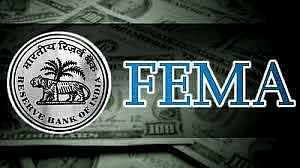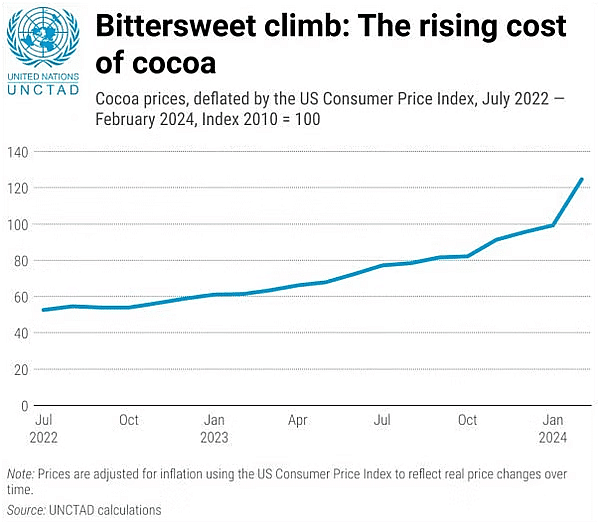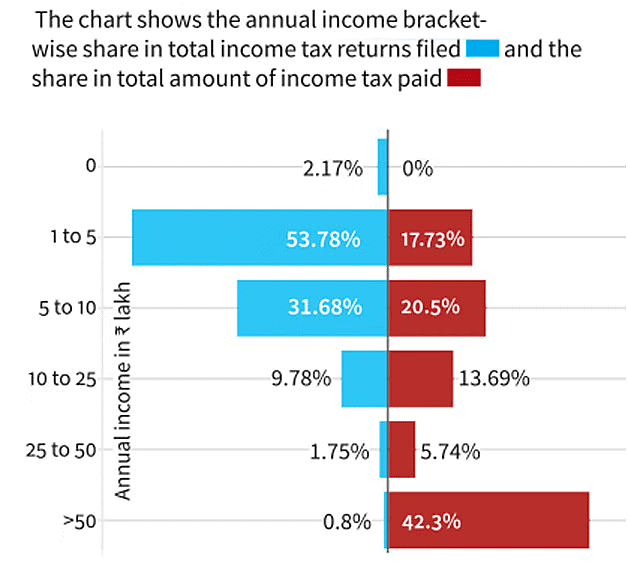Economic Development: May 2024 Current Affairs | Current Affairs: Daily, Weekly & Monthly - CLAT PDF Download
Shrimp Farming in India

Context
Recently, India responded to allegations from a US-based Human Rights Group regarding poor conditions at shrimp farms in the country. India refuted these claims, citing certification by the Marine Products Export Development Authority (MPEDA) for all shrimp exports as evidence that such concerns are unfounded.
State of Shrimp Farming in India
- Definition and Characteristics: Shrimp are crustaceans characterized by a flattened, semi-transparent body and a flexible abdomen ending in a fanlike tail. They thrive in warm waters, ideally between 25-30°C, and prefer soil textures like clay-loam or sandy-clay loam with a slightly alkaline pH (6.5-8.5).
- Shrimp Farming: Involves raising shrimp in controlled environments such as ponds, tanks, or raceways primarily for human consumption.
- India as a Shrimp Exporter: India is among the world's largest exporters of shrimp. In the fiscal year 2022-23, seafood exports from India reached USD 8.09 billion (approximately ₹64,000 crore), with shrimp contributing significantly at USD 5.6 billion. India holds a substantial market share in the US seafood market, surpassing competitors like Thailand, China, Vietnam, and Ecuador.
- Shrimp Producing States: Andhra Pradesh leads as the largest shrimp producer, contributing 70% of India's total shrimp output. Other significant states include West Bengal and Gujarat, with key production areas being Sundarbans in West Bengal and Kutch in Gujarat.
- Regulation: All shrimp farming units in India are registered with MPEDA and adhere to the HACCP-based food safety management system, aligned with US regulations. The use of pharmacologically active substances in aquaculture has been prohibited since 2002. National regulations include the National Residue Control Plan and rigorous pre-export checks.
Government Initiatives Related to Seafood Exports
- Pradhan Mantri Matsya Sampada Yojana (PMMSY): Launched in 2020, PMMSY supports quality shrimp production, species diversification, export promotion, branding, standards and certification, and infrastructure development post-harvest.
- Fisheries and Aquaculture Infrastructure Development Fund (FIDF): Established in 2018, FIDF provides loans to enhance infrastructure and modernization in both marine and inland fisheries.
- Kisan Credit Card (KCC) Fisheries Scheme: This initiative offers credit support to fisheries farmers, providing new cardholders with up to ₹2 lakhs and existing holders with an increased limit of ₹3 lakhs at a subsidized interest rate of 7% per annum, including 2% interest subvention by the Government of India.
Navigating India’s Transition to Sustainability

Context
Recently, PwC India, a professional services network, released a report titled 'Navigating India's Transition to Sustainability'.
What are the Key Findings of the Report?
About:
- The report analyses how companies are adapting to the Business Responsibility and Sustainability Reporting (BRSR) disclosures mandated by the Securities and Exchange Board of India (SEBI).
- The analysis covers the BRSR reports of the top 100 companies for the financial year ended 31st March 2023.
- The business sector is seen as a critical enabler in achieving India's net zero vision by 2070.
- Net Zero is referred to as carbon neutrality, i.e. achieving an overall balance between greenhouse gas emissions produced and greenhouse gas emissions taken out of the atmosphere.
Key Findings of the Report:
- 51% of India’s top 100 listed companies by market capitalisation disclosed their data for FY23 despite it being a voluntary disclosure in BRSR.
- 34% of the companies have reduced their Scope 1 emissions and 29% have reduced their Scope 2 emissions.
- Scope 1 covers emissions from sources that an organisation owns or controls directly.
- Scope 2 is emissions that a company causes indirectly and come from where the energy it purchases and uses is produced.
- 44% of the top 100 listed companies conducted the life-cycle assessment of their products or services.
- 49% of companies have increased their energy consumption from renewable sources and 31% of companies have disclosed their net-zero targets.
- Key initiatives leading to emission reduction include transitioning to energy-efficient technologies such as LEDs, adopting efficient air-conditioning, ventilation, and heating systems, shifting to renewable sources for energy needs, purchasing carbon offsets, and entering into off-site power purchase agreements.

How Significant is the Report for India?
- The report sheds light on India’s journey towards sustainability, emphasising ESG considerations.
- The report encourages companies to be accountable for their sustainability efforts.
- The report aligns with the BRSR framework introduced by the SEBI. The report serves as a guide for compliance and transparent disclosure.
- The report showcases India’s commitment to sustainability, enhancing investor confidence.
- Globally, sustainable practices are becoming a competitive advantage, and this report positions India favourably.
- Policymakers can draw insights from the report to shape regulations and policies that promote sustainable practices.
- The shift towards sustainability in India isn't merely about meeting regulations but it's also about fostering growth in a responsible manner.
- The report emphasises the need to balance economic development with environmental and social well-being.
What are the Initiatives taken to Ensure ESG Compliance in India?
- In 2011, the Ministry of Corporate Affairs (MCA) released the National Voluntary Guidelines (NVGs) on Social, Environmental and Economic Responsibilities of Business, marking an early step in defining ESG disclosure standards for companies.
- The SEBI introduced the Business Responsibility Reports (BRR) in 2012, requiring the top 100 listed entities by market capitalisation to include BRR in their annual reports. This was later extended to the top 500 listed entities in 2015.
- In 2021, SEBI replaced the BRR reporting requirement with the more comprehensive Business Responsibility and Sustainability Report (BRSR).
- The BRSR seeks disclosures from listed entities on their performance against the nine principles of the ‘National Guidelines on Responsible Business Conduct’ (NGBRCs).
- Companies have the opportunity to use different reporting frameworks in order to show their commitment to ESG practices like Global Reporting Initiative (GRI), Carbon Disclosure Project (CDP), and Sustainability Accounting Standards Board (SASB).
3O Years of TRIPS

Context
Recently, members of the World Trade Organization (WTO) marked the 30th anniversary of the Agreement on Trade-Related Aspects of Intellectual Property Rights (TRIPS). In Marrakesh, a significant agreement was reached that contributed to the establishment of the WTO in 1995. This agreement, known as TRIPS, has had a lasting impact.
How does the TRIPS Agreement Evolved?
- The Venetian Patent Statute (1474): It was the first codified patent system in Europe that granted inventors a temporary monopoly on "new and ingenious devices".
- The Industrial Revolution and the Need for International Standards (19th Century): Rapid technological advancements created a need for the harmonisation of patent laws.
- The Paris Convention (1883) was the first step taken to protect intellectual work in other countries.
- The General Agreement on Tariffs and Trade (GATT) addressed intellectual property in a limited way.
- The Uruguay Round, spanning from 1987 to 1994, led to the Marrakesh Agreement establishing the WTO, including the TRIPS Agreement.
- The WTO Agreement on TRIPS is the most comprehensive multilateral agreement on intellectual property (IP).
What has been the TRIPS Agreement's Role in International Collaboration?
- Harmonisation of IP Laws: TRIPS set minimum standards for IP protection across member countries.
- This created a more predictable legal environment for international trade and collaboration in research and development (R&D).
- Increased Transparency: TRIPS obligated members to disclose their Intellectual Property (IP) laws and regulations, fostering greater transparency in the global IP system.
- Knowledge Sharing: TRIPS provisions on technology transfer encourage collaboration between developed and developing countries.
- Developed countries are obligated to provide mechanisms for transferring technology to developing countries under certain conditions.
- Promotion of Social and Economic Welfare: WTO highlighted TRIPS' role in balancing rights with obligations to promote social and economic welfare, aligning with the SDGs' objectives.
- During the late 1990s crisis, TRIPS' flexibilities were crucial for access to antiretroviral treatments, illustrating its significance in public health emergencies.
What are the Challenges Related to TRIPS?
- Balance Between Rights and Access: TRIPS' focus on strong IP rights can limit access to essential medicines, educational materials, and agricultural technologies in developing countries.
- Biopiracy and Traditional Knowledge: Concerns exist regarding the patenting of genetic resources and traditional knowledge from developing countries without fair compensation.
- TRIPS' provisions on disclosure of the origin of genetic resources and traditional knowledge are seen as inadequate.
- Enforcement Issues: Enforcing IP rights, particularly in areas like copyright infringement and counterfeiting, remains a challenge for many developing countries.
- Lack of resources and robust legal systems can hinder effective IP protection.
- Data Privacy: International discussions are needed to address data ownership, privacy, the issue of e-commerce, and the patentability of data-driven inventions in the context of Artificial Intelligence (AI) and big data.
- Global Health Equity: Amidst ongoing debate on flexibilities within the TRIPS agreement, like compulsory licensing, access to affordable medicines still remains a challenge, especially in the global south.
Way Forward
- Standardisation and Capacity Building: Developing common standards and best practices for IP enforcement across countries, along with capacity-building initiatives for developing nations, can create a fairer global IP landscape.
- Open Innovation and Knowledge Sharing: Exploring models like open-source collaboration and Creative Commons licenses can promote innovation while ensuring knowledge accessibility.
- Addressing Emerging Technologies: Establishing clear guidelines for IP ownership and rights related to artificial intelligence (AI) and other emerging technologies will be crucial for fostering responsible innovation.
RBI Eases FEMA Regulations

Context
Recently, the Reserve Bank of India has relaxed Foreign Exchange Management Act (FEMA) rules to simplify foreign investment in derivatives. Derivatives are financial instruments established between multiple parties, encompassing various types such as stock, bond, and economic indicator derivatives.
Recent FEMA Regulations
- About:
- The recent amendments aim to facilitate margin management for trading in permitted derivatives, both within and outside India.
- Foreign investors will find it easier to invest in derivative instruments following amendments to the FEMA regulations by the RBI.
- Present Mechanism:
- RBI lists interest rate derivatives (interest rate swap, forward rate agreement, interest rate future and foreign currency derivatives, foreign currency forward, currency swap and currency option) as permitted derivative contracts.
- Similarly in equity, four types of derivatives include forward contracts, futures contracts, options contracts and swap contracts.
- Recent Changes:
- Permission for Authorised Dealer (AD) to Allow Interest-Bearing Accounts: Authorised Dealer (AD) in India can allow persons resident outside India to open, hold, and maintain interest-bearing accounts in Indian Rupees and/or foreign currency for collecting margin in India for permitted derivative contracts.
- In the present mechanism also RBI has kept the permitted derivative contracts similar to the previous provisions.
- Benefits for Non-Residents:
- Non-residents can open and maintain interest-bearing accounts with ADs in India for margin-related purposes, earning interest on these funds instead of keeping them idle.
- Having a dedicated account for margin requirements makes it easier for non-residents to manage their margin obligations and funds related to permitted derivative contracts in India.
Foreign Exchange Management Act, 1999
- The legal framework for the administration of foreign exchange transactions in India is provided by the Foreign Exchange Management Act, 1999.
- Under the FEMA, all transactions involving foreign exchange have been classified either as capital or current account transactions.
- Current Account Transactions:
- All transactions undertaken by a resident that do not alter his/her assets or liabilities, outside India are current account transactions.
- Example: Payment in connection with foreign trade, expenses in connection with foreign travel, education etc.
- Capital Account Transactions:
- It includes those transactions which are undertaken by a resident of India such that his/her assets or liabilities outside India are altered.
- Example: Investment in foreign securities, acquisition of immovable property outside India etc.
- Resident Indians:
- A 'person resident in India' is defined in Section 2(v) of FEMA, 1999 as
- A person residing in India for more than 182 days during the course of the preceding financial year.
- Any person or body corporate registered or incorporated in India.
Strengthening of Rupee

Context
The Indian Rupee depreciated by around 27.6% against the US dollar in the last 10 years. The currency has gained real value when considering its exchange rate against major global currencies.
How is the Decadal Journey of the Indian Rupee?
- The rupee fell from Rs 44.37 to Rs 60.34 (26.5%) from 2004 to 2014 against the US dollar.
- The rupee has further depreciated from Rs 60.34 to Rs 83.38 (27.6%) against the US dollar in the last between 2014 to 2024.
- Appreciation and depreciation of currency refer to changes in the value of a currency relative to other currencies in the foreign exchange market.
 Between 2004 and 2024, rupee declined by 32.2% (from 133.77 to 90.76) as per 40-currency basket NEER and 40.2%, (from 139.77 to 83.65) as per 6-currency basket NEER and during the same period.
Between 2004 and 2024, rupee declined by 32.2% (from 133.77 to 90.76) as per 40-currency basket NEER and 40.2%, (from 139.77 to 83.65) as per 6-currency basket NEER and during the same period.- The rupee’s average exchange rate against the US dollar dropped by 45.7%, from Rs 44.9 to Rs 82.8.
- Therefore, between 2004 and 2024, the rupee has undergone a smaller depreciation against the currencies of India's major trading partners compared to its depreciation solely against the US dollar.
- Also rupee’s trade-weighted REER for both 40-currency and 6-currency basket has increased in the last 20 years indicating that Rupee strengthened between 2004-05 and 2023-24.
- Rupee has strengthened in real terms over time, while ruling at 100 or above most of the time in the last 10 years.
What is an Exchange Rate?
- About:
- An exchange rate is the rate at which one currency can be exchanged for another currency. It represents the value of one currency in terms of another currency.
- Exchange rates are typically expressed as the amount of one currency needed to purchase one unit of another currency.
- Types:
- Fixed Exchange Rate: Governments or central banks set the value of their currency in relation to other currencies and maintain that value by buying or selling their own currency in foreign exchange markets.
- Floating Exchange Rate: Value of a currency is determined by the forex market based on supply and demand. Most major currencies operate under this system.
- Managed Float: A mix of fixed and floating exchange rates where governments intervene occasionally to stabilise their currency's value.
- Factors Affecting Exchange Rates:
- Interest Rates: Higher interest rates in a country tend to attract foreign investment, increasing demand for that country's currency and strengthening its exchange rate.
- Inflation: If inflation is higher in a country compared to its trading partners, its currency weakens as its purchasing power decreases.
- Economic Growth: A strong and growing economy fosters confidence in a country's currency, leading to a stronger exchange rate.
- Political Stability: Political instability can deter foreign investment and weaken a country's currency.
- Supply and Demand: The fundamental principle of supply and demand plays a major role. If more people want to buy a particular currency (higher demand), its exchange rate strengthens.
What is Effective Exchange Rate (EER)?
- About:
- The Effective Exchange Rate (EER) of a currency is a weighted average of its exchange rates against other currencies, adjusted for inflation and trade competitiveness.
- The currency weights are derived from the share of the individual countries to India’s total foreign trade.
- Effect on Strength of a Currency:
- Strength or Weakness of a Currency depends on the Exchange rate of that currency with the currency of all trading Partners.
- For India, The strength or weakness of the Rupee is, hence, a function of its exchange rate with not just the US dollar, but also with other global currencies.
- In this case, it would be against a basket of currencies of the country’s most important trading partners, termed as the rupee’s “Effective Exchange Rate” or EER.
- Types of Effective Exchange Rate(EER):
- Nominal Effective Exchange Rate (NEER): NEER is a simple average of bilateral exchange rates between the domestic currency and the currencies of major trading partners, weighted by the respective trade shares.
- NEER measures the overall strength or weakness of a currency relative to a basket of other currencies without adjusting for inflation.
- The NEER indices are with reference to a base value of 100 and base rear as 2015-16.
- The Reserve Bank of India has constructed NEER indices of the rupee against a 2 different baskets of Currencies:
- 6 Currency Basket: It is a trade-weighted average rate at which the rupee is exchangeable with a basic currency basket, comprising the US dollar, the euro, the Chinese yuan, the British pound, the Japanese yen and the Hong Kong dollar.
- 40 currencies Basket: It covers a bigger basket of 40 currencies of countries that account for about 88% of India’s annual trade flows.
- Real Effective Exchange Rate (REER):
- REER adjusts NEER for differences in inflation rates between the domestic economy and its trading partners. It reflects changes in the relative price levels of goods and services.
- REER provides a more accurate measure of a currency's trade competitiveness by accounting for changes in price levels.
- REER is calculated by dividing NEER by a price deflator (such as Consumer Price Index) for the domestic economy and multiplying by 100.
What are the Implications of Currency Depreciation on the Indian Economy?
- Positive Impacts:
- Boosts Exports: Indian exports become cheaper for foreign buyers, potentially increasing demand and boosting export earnings.
- Inward Remittances: A weaker rupee will enable workers abroad to send more rupees back home when they convert their foreign currency earnings.
- This can increase disposable income in India.
- Negative Impacts:
- Higher Import Costs: Imported goods, including essential items like oil and machinery, become more expensive.
- This can lead to inflationary pressures, where the general price level of goods and services rises, impacting the common man's purchasing power.
- Costlier Foreign Debt: If India has borrowed money in foreign currencies, a weaker rupee means it has to pay back more rupees to settle the debt.
- This can strain the government's finances.
- Discourages Foreign Investment: A depreciating rupee can be seen as a sign of economic instability, potentially discouraging foreign investors from investing in India.
Socio-Ecological Impact of LPG Price Escalation

Context
A recent study showed that in Jalpaiguri, West Bengal, there is significant dependence on fuelwood despite government attempts to encourage the use of Liquefied Petroleum Gas (LPG). This underscores the challenges posed by expensive LPG prices and the environmental consequences of relying on fuelwood, prompting concerns about sustainability and underscoring the necessity for viable alternatives.
What are the Key Highlights of the Study?
- Dependence on Forests for Fuelwood: Local communities in Jalpaiguri heavily rely on forests for fuelwood due to limited access to alternative cooking fuels.
- Economic Constraints: The cost of commercial LPG cylinders, priced at over Rs 1500 is considered exorbitant for many households, particularly those below the poverty line.
- Government Initiatives: Government schemes, such as the Pradhan Mantri Ujjwala Yojana (PMUY), facilitated the transition from fuelwood to LPG initially, but the subsequent increase in LPG prices posed a challenge.
- Despite efforts to increase LPG penetration in rural areas, many households only refill their cylinders infrequently due to the high cost.
- Environmental and Social Implications: Dependence on fuelwood contributes to forest degradation and increases the risk of human-wildlife conflicts, particularly
- encounters with elephants.
- The persistence of fuelwood usage jeopardises forest health, wildlife habitats, and local livelihoods.
- Sustainable Alternatives: Collaborative efforts with the West Bengal Forest Department and Joint Forest Management Committees aim to promote sustainable forest
- management practices.
- Initiatives include planting saplings of high fuelwood value in villages, promoting efficient cooking stoves, optimising shade tree density in tea plantations, and
- fostering multi-stakeholder engagement for resource governance.
- Locally Acceptable Solutions: To secure forests, wildlife, and livelihoods, it is imperative to develop locally acceptable and sustainable alternatives to fuelwood.
- Community involvement and engagement with relevant stakeholders are crucial for the success and adoption of alternative cooking fuels and forest conservation efforts.
Has the Government Pushed the Use of LPG?
- The Indian government has made efforts to increase LPG adoption in rural households:
- Launched the Rajiv Gandhi Gramin LPG Vitrak scheme in 2009 to expand LPG distribution in remote areas.
- Initiated direct benefit transfers for LPG under the 'PAHAL' scheme in 2015.
- Implemented direct home-refill deliveries and the 'Give it Up' program in 2016.
- Introduced the Pradhan Mantri Ujjwala Yojana (PMUY) in 2016 to install LPG connections in 80 million below-poverty-line households.
- The scheme also provides a subsidy of Rs 200 for every 14.2-kg cylinder, which increased to Rs 300 in October 2023.
- However, despite these efforts, LPG prices in India were reportedly the highest among 54 countries in 2022, at around ₹300/liter.
What Drives India's High LPG Prices?
- Dependency on Imports:
- India heavily depends on imported LPG, with over 60% of its requirements being sourced through imports.
- This reliance significantly influences the pricing dynamics of LPG within the country.
- LPG, primarily composed of butane and propane in varying proportions, is priced based on the Saudi Contract Prices (CP), which are internationally set by Saudi Aramco.
- From FY20 to FY23, the average Saudi CP rose from USD 454 per tonne to USD 710 per tonne, contributing to the increase in LPG prices in India.
- Analysts attribute this price hike to increased demand from Asian markets, particularly in petrochemicals where propane is a critical feedstock.
- Import Dynamics:
- Between April and September 2022, India imported 8.7 million tonnes of LPG out of a total consumption of 13.8 million tonnes, highlighting its heavy reliance on imported LPG.
- The pricing formula for LPG in India is closely tied to global market trends, particularly influenced by the Middle East, the largest supplier of LPG to India.
- Impact on Consumers:
- A recent increase of Rs 50 per cylinder in March 2023 led to a 4.75% rise in the price of a 14.2 kg domestic LPG cylinder in Delhi.
- Taxes and dealer commissions constitute only 11% of the retail price of the cylinder, with nearly 90% attributed to the cost of LPG itself. This is unlike the pricing structure of petrol and diesel, where taxes play a dominant role.
What are Potential Solutions for Reducing Dependency on Fuelwood?
- Promoting Renewable Energy Sources: Encouraging the adoption of renewable energy sources such as solar, wind, and hydropower can help reduce reliance on fuelwood.
- Many countries have implemented policies and incentives to promote the use of renewable energy, such as feed-in tariffs, tax credits, and subsidies.
- Improved Cookstoves: Traditional stoves waste a lot of heat. Distributing Improved Cookstoves (ICS) that burn fuelwood more efficiently can significantly reduce consumption.
- For example, projects in Nepal have shown that ICS use can cut fuelwood needs by half.
- The Global Alliance for Clean Cookstoves, a public-private partnership, has worked to distribute over 80 million clean and efficient cookstoves in developing countries since its inception in 2010.
- Alternative Fuels: Promoting the use of alternative fuels such as biogas, pellets, or briquettes made from agricultural waste can reduce the demand for fuelwood and provide a more sustainable energy source.
- Sustainable Forest Management Practices: Ensuring sustainable forest management practices can help maintain a balance between fuelwood extraction and forest regeneration, reducing the environmental impact of fuelwood consumption.
 |
Download the notes
Economic Development: May 2024 Current Affairs
|
Download as PDF |
Chocolate Industry Meltdown

Context
Cocoa bean prices, essential for making chocolate, reached an all-time high of $12,000 per ton in April, marking a fourfold increase compared to last year's prices.
Chocolate Industry
- The chocolate industry is currently facing a significant crisis as the prices of cocoa beans, its most crucial raw material, have soared to unprecedented levels.
- Due to the exorbitant prices of cocoa beans, cocoa processors, who transform these beans into butter and liquor for chocolate production, have been compelled to curtail their operations.

Factors Behind Rising Cocoa Prices
El Niño and Climate Change:
- The emergence of El Niño, a weather phenomenon characterized by abnormal warming of Pacific Ocean waters, has triggered heavier rainfall in West Africa, where a substantial portion of the world's cocoa beans are cultivated.
- This increased rainfall has created favorable conditions for the spread of black pod disease, a fungal infection that causes cocoa pods to rot on the trees, significantly diminishing yields.
- Climate change exacerbates the situation by causing erratic rainfall patterns and extreme weather events, making cocoa trees more susceptible to diseases and environmental stressors.
- Experts predict that the effects of climate change could render some cocoa-growing regions unsuitable for cultivation in the future.
Low Income of Cocoa Farmers:
- Most cocoa beans are sourced from West African countries, where cocoa farmers struggle to earn a liveable income, often falling below the poverty line.
- The dire financial situation of cocoa farmers hampers their ability to invest in land, leading to decreased productivity and resilience against climate change.
- To make ends meet, some farmers resort to employing slave and child labour or selling their land to illegal miners, further exacerbating social and environmental issues.
Impact on Cocoa Farmers
Ghanaian Farmers' Plight:
- In Ghana, a significant cocoa-producing country, up to 90% of farmers cannot afford basic necessities, highlighting the severity of the situation.
- Over recent years, farmers' incomes have seen a significant decline, with women particularly affected by the downturn.
- The lack of financial resources prevents farmers from investing in land improvement or adopting sustainable agricultural practices, perpetuating a cycle of poverty and vulnerability.
Corporate Profits vs. Farmer Exploitation
Profit Disparity:
- Despite the soaring cocoa prices and subsequent chocolate sales, major chocolate companies such as Lindt, Mondelēz, Nestlé, and Hershey’s continue to generate substantial profits.
- However, these companies have not taken adequate measures to address the plight of cocoa farmers or improve their living standards, raising ethical concerns about their business practices.
Exploitation Concerns:
- The focus on maintaining low consumer prices has historically led to the exploitation of cocoa farmers, who bear the brunt of the industry's cost-cutting measures.
- Research suggests that the chocolate industry's profitability is sustained by the underpaid labor of West African farmers, particularly children, highlighting systemic issues of exploitation and injustice.
Moving Forward
- Urgent action is needed to address the root causes of cocoa bean scarcity and farmer exploitation within the chocolate supply chain.
- Without meaningful intervention, the industry risks perpetuating social and environmental injustices, leading to further price hikes and human rights abuses.
Cocoa Consumption in India
Geographical Distribution:
- Primarily grown as an intercrop in Andhra Pradesh, Tamil Nadu, Karnataka, and Kerala.
- Requires approximately 40-50% shade for optimal growth.
- Majority of cocoa is cultivated in coconut groves, followed by arecanut, oil palm, and rubber plantations.
Andhra Pradesh's Cocoa Fields:
- Concentrated in West Godavari, East Godavari, and Krishna districts.
Cocoa Production in India:
- Area and Production:
- Cocoa is cultivated across 1,03,376 hectares in Kerala, Karnataka, Andhra Pradesh, and Tamil Nadu, with a total production of 27,072 metric tons.
- Andhra Pradesh leads in area with 39,714 hectares and production of 10,903 metric tons.
- The highest productivity is also in Andhra Pradesh at 950 kg per hectare.
- The average cocoa productivity in India is 669 kg per hectare.
- Export:
- Cocoa is primarily an export-oriented commodity. Currently, there are 10 multinational companies in India engaged in the cocoa industry, exporting products such as beans, chocolates, cocoa butter, cocoa powder, and cocoa-based products to other countries.
- India earns foreign exchange amounting to Rs. 1108 crores through exports of cocoa beans and its products.
- Import:
- The chocolate industry and confectioneries in India demand 50,000 metric tons of dry beans annually.
- The current domestic production of cocoa beans does not suffice to meet this demand.
- Hence, India imports the majority of its cocoa bean requirement, valued at Rs. 2021 crores, from other cocoa-growing countries.
Chocolate Consumption in India
- According to the International Cocoa Organisation, India’s per capita consumption of chocolate is between 100 gm and 200 gm a year, much lower than Japan, which consumes around 2 kg of chocolate per person per year, and even Europe, where the consumption lies between 5 kg and 10 kg a year.

Government Support and Challenges in Cocoa Cultivation
- Perceived Lack of Government Support:
- Despite high demand for cocoa beans, farmers express frustration over the government's lack of encouragement for cocoa cultivation.
- The absence of guidance from research institutes or governmental initiatives, with farming practices relying solely on peer-to-peer knowledge sharing.
- Progressive Initiatives in Andhra Pradesh:
- Andhra Pradesh emerges as the leading cocoa-producing state in India.
- Farmers in districts like west Godavari exhibit progressiveness in adopting cocoa cultivation without significant government intervention.
- The National Horticulture Mission provides a subsidy of Rs 20,000 per hectare to cocoa farmers in Andhra Pradesh for the first three years since 2005, fostering growth in cocoa cultivation.
- Challenges in Implementation:
- Directorate of Cashewnut and Cocoa Development (DCCD), acknowledges challenges in meeting cocoa cultivation targets.
- Despite the mission's objective of adding 20,000 hectares annually, only a quarter of this target is achieved due to resource constraints and competing priorities within the horticulture department.
- Historical Efforts and Partnerships:
- Cadbury's historical efforts in the 1960s saw experimental cocoa planting in Kerala as part of promoting the crop.
- Cadbury continues to promote cocoa cultivation through its 'Cocoa Life' initiative, collaborating with Kerala Agricultural University and Tamil Nadu Agricultural University for research.
- Seedling distribution at subsidized rates and research partnerships with institutions like the Central Plantation Crops Research Institute in Kasargod, Kerala, contribute to cocoa cultivation advancements.
Cocoa Cultivation in India
Geographical Advantage:
- South India's proximity to the Equator provides ideal climatic conditions for cocoa cultivation.
- Significant potential for cocoa planting exists in irrigated coconut, arecanut, and oil palm areas, with only a fraction of these areas currently utilized for cocoa cultivation.
Challenges Hindering Growth:
- Lack of awareness about cocoa cultivation among farmers.
- Weather-related uncertainties and competition from other crops pose challenges.
- Arecanut farmers in coastal Karnataka express concerns about potential yield declines if shifting to cocoa cultivation.
Market Dynamics and Price Trends:
- Local Production and Demand:
- Mondelez India sources a third of its cocoa locally, highlighting the potential for domestic production.
- Local industry demand and a 30% import duty on cocoa products may shield against drastic price falls.
- Price Volatility and Future Outlook:
- Recent years witnessed stability in cocoa bean prices in India, around Rs 200/kg.
- Predictions of a surplus in global cocoa production, particularly in the Ivory Coast, leading to a drop in cocoa futures prices.
- Despite price fluctuations, local demand and government support could stabilize prices for Indian cocoa farmers.
Untapped Potential and Expansion Efforts:
- Quality and Scope:
- Indian cocoa beans are recognized for their quality, comparable to the best globally.
- While Kerala may be saturated, states like Tamil Nadu, Andhra Pradesh, and Karnataka have yet to fully exploit their cocoa-growing potential.
- Exploration Beyond South India:
- Introduction of cocoa cultivation in regions like Assam and Nagaland to diversify cocoa production.
- Despite being an in-demand intercrop with relatively stable prices, cocoa cultivation in India still awaits broader recognition and support.
India’s Aviation Sector

Context
IndiGo, having established dominance in Indian aviation, is now aiming to expand its footprint worldwide by offering direct, affordable, and extended flights from Indian airports. Yet, the strategy of operating long-distance flights at low cost has proven daunting for many airlines, resulting in numerous failures and only a handful achieving sustained profitability.
What is the Long-haul, Low-cost Air Travel Model?
- About the Long-Haul, Low-Cost Air Travel Model:
- Low-cost carriers (LCCs) are extending their reach beyond short-haul routes to offer non-stop, long-duration flights at reduced prices.
- This model seeks to replicate the short-haul LCC success through similar cost-cutting measures and business strategies in long-haul operations.
- Challenges:
- Higher Fuel Costs: Operating larger, wide-body aircraft for long-haul flights increases fuel expenses.
- Increased Operating Costs: Wider aircraft require more crew, maintenance, and incur higher airport fees.
- Turnaround Time and Utilization: Maintaining high aircraft utilization and quick turnaround times, crucial to LCC profitability, becomes challenging.
- Passenger Comfort vs. Cost: Balancing passenger comfort and amenities with the LCC's cost-minimization focus on long flights.
- Network and Profitability: Establishing a sustainable network and flight schedule for long-haul, low-density routes.
- Competition from Full-Service Carriers: Facing competition from established full-service carriers with strong brand loyalty on international long-haul routes.
- Successful Examples:
- A few long-haul LCCs like Scoot, Jetstar, and French Bee have achieved relatively stable and profitable operations.
- Strategies include offering hybrid products with premium/business class options, targeting underserved routes, and leveraging robust domestic/regional networks.
What is the Progress of India’s Aviation Sector?
- Overview:
- India has emerged as the world's third-largest domestic aviation market, following the USA and China.
- The sector has undergone significant transformation, overcoming previous constraints to become a dynamic and competitive industry.
- Proactive government policies and strategic initiatives have spurred growth, creating an enabling environment for expansion and innovation.
- Infrastructure Development:
- India's airport network has experienced a notable expansion, doubling operational airports from 74 in 2014 to 148 by April 2023, enhancing air travel accessibility.
- Regional Connectivity Scheme-UDAN:
- Launched in 2016, the Regional Connectivity Scheme–Ude Desh ka Aam Nagrik (RCS-UDAN) aims to connect underserved and unserved airports.
- The initiative revitalizes airstrips and airports, providing essential air connectivity to isolated communities and stimulating regional economic growth.
- With 517 operational RCS routes linking 76 airports, UDAN has facilitated air travel for over 1.30 crore people, promoting accessibility and economic development.
- Passenger Growth:
- Post-Covid, the aviation industry has witnessed a significant rebound, evidenced by a 29.10% increase in domestic airline passengers from January to September 2023 compared to the same period in 2022.
- International airline passengers also surged by 39.61% during the same period.
- Carbon Neutrality:
- The Ministry of Civil Aviation (MoCA) is actively pursuing carbon neutrality goals, aiming for net zero carbon emissions at Indian airports.
- Airport operators are mandated to assess and reduce carbon emissions, progressing towards carbon neutrality and net zero emissions.
- Greenfield airports are encouraged to prioritize carbon neutrality and net zero emissions in their development plans.
- Airports like Delhi, Mumbai, Hyderabad, and Bengaluru have achieved Level 4+ ACI Accreditation and attained carbon neutrality status, with 66 Indian airports operating entirely on green energy.
What are the Challenges Facing India's Aviation Industry?
- High Fuel Costs: Aircraft Turbine Fuel (ATF) expenses can represent 50-70% of an airline's operational costs and import taxes add to the financial burden.
- Dollar Dependency: Fluctuations in the dollar rate impact profits as major expenses like aircraft acquisition and maintenance are dollar-denominated.
- Cutthroat Pricing: Airlines often engage in aggressive price competition to attract passengers, leading to thin profit margins amidst high operational costs.
- Limited Competition: Currently, IndiGo and a resurgent Air India hold the majority share, possibly nearing 70% combined. This concentration of power can lead to:
- Limited Competition: With fewer major players, there's a risk of reduced competition on routes, potentially leading to higher fares for consumers.
- Pricing Power: The dominant airlines may have more leverage to influence ticket prices, especially if they coordinate strategies.
- Grounded Fleet: A large portion (over a quarter) of Indian aeroplanes are grounded due to safety concerns and financial issues, hindering capacity.
- Environmental Concerns: Pressure to reduce carbon emissions and adopt sustainable practices can add complexity to growth strategies.
Way Forward
- Diversification of Fuel Sources: Emulate efforts to blend biofuels into the fuel mix, lessening reliance on traditional ATF and easing the impact of import tariffs.
- Fuel Hedging Strategies: Adopt fuel hedging strategies to manage fuel price volatility, a common practice among global airlines.
- Ancillary Revenue Streams: Develop additional revenue streams such as cargo services, onboard sales, and premium offerings to enhance profitability.
- Competitive Pricing Strategies: Utilize advanced yield management systems to optimize pricing and maintain profitability without resorting to damaging price competition.
- Customer Loyalty Programs: Strengthen loyalty programs to foster repeat business and reduce the necessity for aggressive pricing strategies.
- Regulatory Reforms: Advocate for regulatory changes that promote new market entries and prevent monopolistic behaviors within the industry.
- Route Optimization: Encourage exploration of underserved routes by airlines to foster competition and expand consumer choices.
- Aircraft Leasing: Consider leasing options for aircraft to maintain operational flexibility and alleviate financial burdens associated with fleet ownership.
- Carbon Offsetting: Implement carbon offset programs such as the ICAO Carbon Emissions Calculator (ICEC) to quantify and mitigate environmental impact.
Rising Share of Personal Income Tax and Indirect Tax

Context
In the midst of ongoing political debates and controversies over socio-economic policies, recent tax data from the Ministry of Finance reveals notable trends in India's tax environment. According to the report, there has been a rise in the collection of personal income tax and indirect taxes, whereas collections from corporate taxes have declined.
What are the Findings of the Report?
Growth in Direct Tax Collection:
- India’s net direct tax collections grew 17.7% in 2023-24 to hit Rs.19.58 lakh crores.
- This can be attributed to a surge in personal income taxes whose share of the tax rose to 53.3% from 50.06% in the previous year.
- The data also show that revenues from personal income tax and securities transaction tax (STT) grew at almost double the pace compared to revenues from corporate taxes last year.
- Securities Transaction Tax (STT) is a tax levied on the purchase and sale of securities such as stocks, derivatives, and equity-oriented mutual funds. It was introduced in India in 2004 as a part of the Finance Act, 2004.
- The purpose of STT is to collect revenue for the government and to discourage speculative trading by adding a small tax on each transaction.
- Direct Tax: A direct tax is a tax that an individual or organisation pays directly to the entity that imposed it. It is a “progressive tax” because those who earn less are taxed less and vice-versa.
Types of Direct Taxes:
- Income Tax: It is based on an individual’s or organisation’s earnings.
- Property Tax: Property tax is assessed on real estate properties (land, buildings, etc.).
Dip in Corporate Tax:
- Share of Corporate Taxes contribution to overall tax collection dipped to 46.5% from 49.6% in 2022-23.
- Corporate taxes refer to taxes imposed on the profits of corporations by governmental entities. These taxes are typically based on the net income of a corporation after accounting for various deductions and credits.
- The share of corporate tax has been on a decreasing trend, while that of personal income tax has been increasing.
- The sharp fall in corporate tax after FY19 can be attributed to the deep corporate tax cuts introduced by the ruling government in September 2019.
- As of February 2024, the gap between the two tax shares further increased, with income tax forming 28% of the gross tax- a new peak and corporate tax at 26%.

Decrease in Share of Direct Taxes, and Increase in Share of Indirect Taxes:
- Indirect taxes, which include union excise duties and the Goods and Services Tax are considered “regressive” as all consumers, regardless of their income levels, pay the same amount.
- The share of Indirect taxes, which had been falling steadily since the 1980s, has increased from 2010-11 onwards.
- The increasing share of indirect taxes implies a heavier burden on lower-income individuals.
- On the other hand, the share of Direct taxes, which had been increasing till 2010-11, has consistently recorded a downturn in recent years.
- Thus, the increased tax burden on poorer citizens and those in the middle-class category is a result of the growing proportion of personal income tax and indirect taxes within the overall.

Relation Between Annual Income Vs Income Tax Returns Filed:
- The majority (53.78%) of individuals filing personal income tax have an annual income ranging from Rs 1 lakh to Rs. 5 lakh and they contribute 17.73% in total value income tax paid.
- There are only a small number (0.84%) of wealthier individuals earning more than Rs. 50 lakh and they have the highest share in the total value of income tax paid (42.3%).

Effective Personal Income Tax Rate:
- A comparison of India with BRICS economies shows that India has among the highest effective personal income tax rates.
- The effective personal income tax rate is the percentage of an individual's income that they actually pay in taxes after accounting for deductions, credits, exemptions, and other factors that affect their tax liability.

Why is Rising Share of Personal Income Tax and Indirect Taxes a Matter of Concern?
- Income Inequality: If personal income tax is a significant portion of government revenue, it may disproportionately burden lower and middle-income individuals, exacerbating income inequality.
- This can occur if the tax system is not progressive enough or if there are loopholes that allow the wealthy to avoid paying their fair share.
- Consumer Burden: Indirect taxes are typically regressive as they take a higher percentage of income from low-income individuals compared to high-income individuals.
- This can place a heavier burden on those with lower incomes, potentially leading to decreased consumer spending and economic activity.
- Economic Efficiency: High personal income tax rates can discourage work, savings, and investment, leading to a less efficient allocation of resources in the economy.
- Also, excessive reliance on indirect taxes may distort consumer behaviour and lead to market inefficiencies.
- Tax Evasion and Avoidance: As personal income tax rates rise, individuals may be more incentivised to engage in tax evasion or avoidance strategies to reduce their tax liabilities.
- This can undermine the integrity of the tax system and reduce overall government revenue.
- Macroeconomic Stability: Heavy reliance on personal income tax and indirect tax revenue can make government finances vulnerable to economic downturns.
- During periods of recession or high unemployment, personal income tax revenues may decline, leading to budget deficits or cuts in essential services.
What are the Steps Taken by the Government to Boost the Direct-Tax Collection?
Promoting Voluntary Income Tax Compliance:
- Vivad se Vishwas Scheme: This scheme allows taxpayers to file declarations to settle pending tax disputes, benefiting the government by providing timely revenue and reducing litigation costs for taxpayers.
- Focus on Digital Transactions: The government encourages digital payments to reduce cash-based transactions, which are more difficult to track for tax purposes.
- Personal Income Tax Options: The Finance Act of 2020 offers individuals and cooperatives the option to pay income tax at lower rates if they forgo certain exemptions and incentives.
- Enhanced Scrutiny and Compliance: Tax authorities have increased their scrutiny and compliance efforts, using tax audits, surveys, and data analytics to identify tax evaders and non-compliant taxpayers.
- Awareness and Education Campaigns: The government runs campaigns to educate taxpayers about their rights and responsibilities, the repercussions of non-compliance, and the advantages of being part of the formal economy.
- Expansion of TDS/TCS Scope: To broaden the tax base, several new transactions now fall under Tax Deduction at Source (TDS) and Tax Collection at Source (TCS), including large cash withdrawals, foreign remittances, luxury car purchases, e-commerce, sales of goods, and property acquisitions.
- Tax Deduction at Source (TDS): A payer (deductor) must deduct tax at the source when making specified payments to another person (deductee) and remit this to the Central Government.
- Tax Collection at Source (TCS): Sellers of specified goods collect an additional tax from buyers at the time of sale, which is then remitted to the government.
- Transparent Taxation - Honoring The Honest Platform: This platform aims to enhance transparency in the income tax system and empower taxpayers.
Corporate Governance for Startups

Context
Recently, the Confederation of Indian Industry (CII) introduced a corporate governance charter for startups, which includes a self-evaluative scorecard.
What are the Key Provisions of the Charter?
- Charter will provide suggestions on Corporate Governance tailored for Startups and offer guidelines suitable for different stages of a startup which is aiming to enhance governance practices.
- Corporate Governance in India is a set of rules, practices and processes by which a company is guided and controlled.
- Self Evaluative Governance Scorecard:
- The charter includes an online self-evaluative governance scorecard that startups can use to evaluate their current governance status and its improvement over time.
- It will allow startups to measure their governance progress, with score changes indicating improvements in governance practices as assessed against the scorecard from time to time.
4 key Stages of Guidance to Startups:
- At the Inception stage: The focus of Startup will be on:
- Board formation,
- Compliance monitoring,
- Accounting, Finance, External audit, Policies for related-party transactions, and
- Conflict resolution mechanisms.
- In the Progression stage: A startup may additionally focus on:
- Monitoring key business metrics,
- Maintaining internal controls,
- Defining a hierarchy of decision-making, and
- Setting up an audit committee.
- For the Growth stage: The focus will be on:
- Building stakeholder awareness towards the vision, mission, code of conduct, culture, and ethics of an organisation,
- Ensure diversity and inclusion on the board and
- Fulfilling statutory requirements, according to the Companies Act 2013 and other applicable laws and regulations.
- At the Going Public stage: The Focus of the startup will be on:
- Expanding its governance in terms of monitoring the functioning of various committees,
- Focus on fraud prevention and detection,
- Minimise information asymmetry,
- Evaluating board performance.
- Valuation: The valuations of businesses should be kept as realistic as possible.
- Startups may strive for long-term value creation rather than short-term valuations.
- Long-Term Goals: The needs of the business entity should be separated from the personal needs of its founder(s), but at the same time, the goals and needs of the founders, promoters, and initial investors should be aligned with the long-term goals of the business.
- Separate Legal Entity: The startup should be maintained as a separate legal entity with the organisation’s assets distinct from the founders’ assets.
What is Corporate Governance?
- About:
- Corporate governance, which refers to the system of rules, practices, and processes by which a company is directed and controlled, plays a crucial role in ensuring that businesses are run ethically and in the best interests of their stakeholders.
- It enforces strong ethical standards and holds individuals accountable for their actions.
- Principles of Corporate Governance:
- Fairness: The board of directors should treat shareholders, employees, vendors, and communities with fairness and equal consideration.
- Accountability: The board is required to explain the purpose of the company's activities and report on its conduct.
- Transparency: The board should ensure that timely, accurate, and clear information is provided about financial performance, conflicts of interest, and risks to shareholders and other stakeholders.
- Risk Management: The board and management are responsible for identifying and controlling various risks.
- They should take action based on recommendations to manage these risks and inform relevant parties about their existence and status.
- Corporate Social Responsibility (CSR): It involves integrating environmental, social, and governance (ESG) considerations into business strategy and operations, and contributing positively to society and the environment.
- Regulatory Framework in India:
- The Companies Act, 2013
- Securities and Exchange Board of India (SEBI)
- Institute of Chartered Accountants of India (ICAI)
- Institute of Company Secretaries of India (ICSI): It issues secretarial standards as per the provision of the Companies Act, 2013.
- Committees Related to Corporate Governance:
- Confederation of Indian Industry (CII) National Task Force on Corporate Governance (1996):
- The task force, chaired by Rahul Bajaj, developed a voluntary code of conduct for Indian companies.
- Kumar Mangalam Birla Committee (1999):
- This committee was set up by the SEBI to develop a mandatory code of corporate governance for listed companies.
- The committee's recommendations addressed issues such as board composition, independent directors, audit committees, and risk management.
- Naresh Chandra Committee (2002):
- This committee, constituted by the Department of Company Affairs (DCA), examined various corporate governance issues related to statutory audits, the independence of auditors, and the role of independent directors.
- Its recommendations led to significant changes in the Companies Act.
- Narayana Murthy Committee (2003): This SEBI-constituted committee reviewed the implementation of the corporate governance code by listed companies.
- The committee's recommendations helped strengthen the code and improve its effectiveness.
- Importance of Corporate Governance:
- Strengthens Investors Confidence: Strong corporate governance maintains investors’ confidence in the financial market, as a result of which companies can raise capital efficiently and effectively.
- International Flows of Capital: It enables companies to reap the benefits of the global capital markets which will contribute to economic growth.
- Increased Productivity: It also minimises wastages, corruption, risks and mismanagement.
- Brand Image: It helps in brand formation and development of a company. It ultimately increases capital flows from foreign institutional investors (FII) and foreign direct investment (FDI).
- Challenges:
- Ensuring Objective Board: It is a widespread practice in India for the associates and relatives of company owners to be selected as board members.
- Performance Evaluation of Directors: Corporate firms sometimes do not share the results of performance evaluations to avoid public scrutiny and negative feedback.
- Removal of Independent Directors: Sometimes, Independent directors are easily removed from their positions by the promoters if they do not side with promoters’ decisions.
- Founders Control and Succession Planning: In India, founders’ ability to control the affairs of the company has the potential of derailing the entire corporate governance system.
- Unlike developed economies, in India, the identity of the founder and the company is often merged.
How to Improve Corporate Governance in India?
- Strengthen Regulatory Framework: Continuously update and enforce corporate governance regulations to align with international best practices.
- Independent Directors and Diversity in Board Composition: It ensures their autonomy and effectiveness and brings a broader range of perspectives and expertise to decision-making processes.
- Transparency and Disclosure: Mandate comprehensive and timely disclosure of financial information, ownership structures, related-party transactions, and corporate governance practices.
- Shareholder Rights and Activism: Enhance shareholder rights, including voting rights, information access, and participation in key decisions.
- Foster constructive dialogue and engagement with all stakeholders.
- Continuous Evaluation and Improvement: Establishing mechanisms for ongoing evaluation and benchmarking of corporate governance practices.
- Regularly solicit feedback from stakeholders and adapt policies and procedures accordingly.
|
1072 docs|730 tests
|
FAQs on Economic Development: May 2024 Current Affairs - Current Affairs: Daily, Weekly & Monthly - CLAT
| 1. What are the key challenges faced by the shrimp farming industry in India? |  |
| 2. How is India transitioning towards sustainable shrimp farming practices? |  |
| 3. What impact has the TRIPS agreement had on India's economic development over the past 30 years? |  |
| 4. How has the recent easing of FEMA regulations by the RBI affected India's foreign exchange management? |  |
| 5. What measures can be taken to strengthen the rupee and stabilize India's currency market? |  |



























